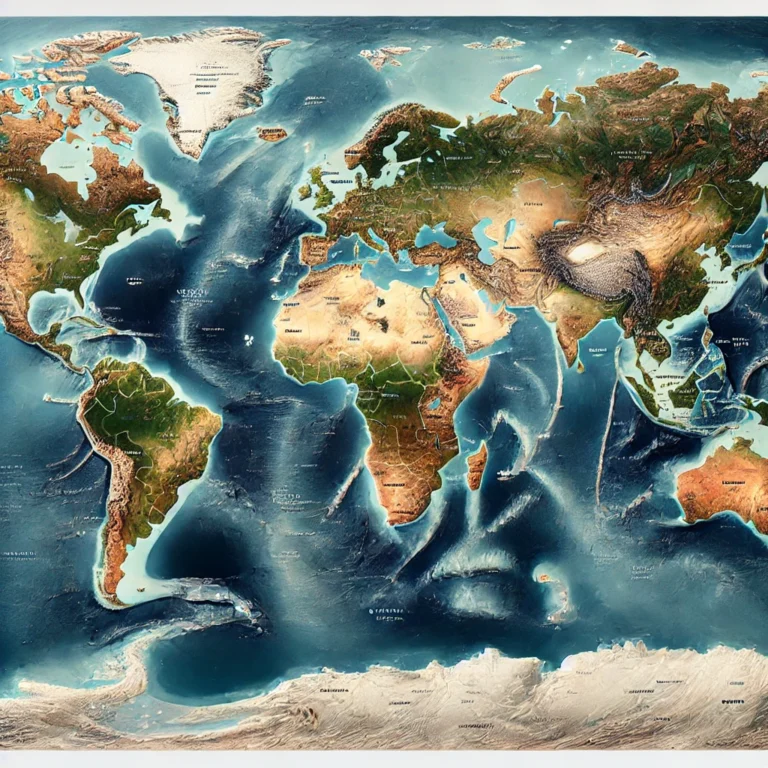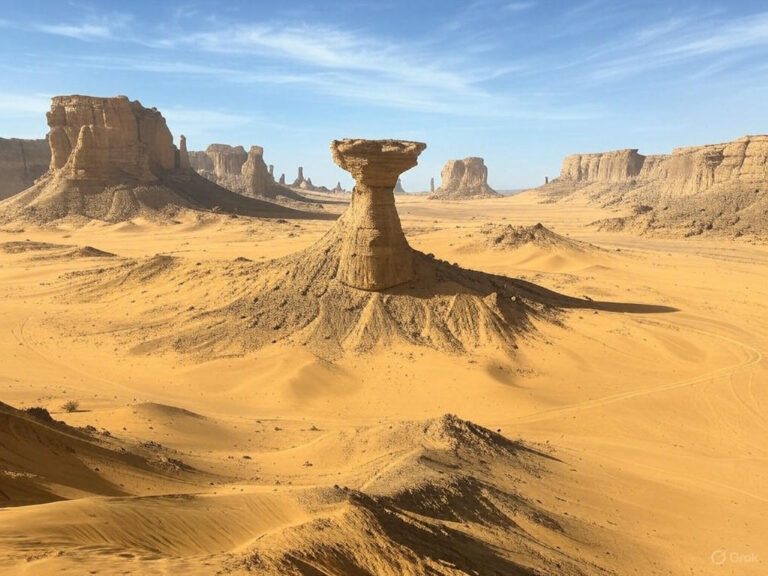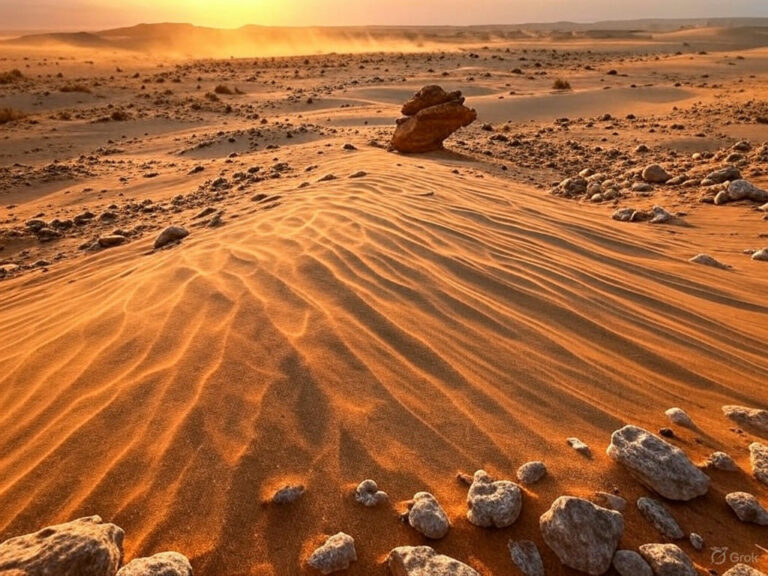Major Lakes of North America
🌊 The Great Lakes – A Continental Freshwater Giant
🔶 What are the Great Lakes?
The Great Lakes refer to five large freshwater lakes located in the northeastern part of North America — straddling the border of the USA and Canada. These are:
Superior, Michigan, Huron, Erie, and Ontario
👉 (Mnemonic: SM HEO – west to east)
SM HEO: Super Man Helps Every One 😄
These lakes are:
- Interconnected
- Drain into the Atlantic Ocean through the St. Lawrence Seaway
- Formed in a fault zone of highly deformed rocks
- Created and shaped by glacial activity during the last Ice Age
🧠 Key point: These are not isolated lakes — they function as a single, integrated drainage system flowing in a step-wise manner toward the Atlantic.
🔁 Flow Pattern of the Great Lakes
Water in this system flows sequentially as follows:
Lake Superior → Lake Michigan (connected via straits) → Lake Huron → Lake St. Clair → Lake Erie → Niagara Falls → Lake Ontario → St. Lawrence River → Atlantic Ocean
Let’s simplify this:
- Lake Superior and Michigan (connected by the Straits of Mackinac) drain into Huron
- Water moves through Lake St. Clair into Erie
- Then over the dramatic Niagara Falls into Ontario
- Finally exits through the St. Lawrence River into the ocean
📍 Niagara Falls is a vital part of this natural water staircase.

🧾 Interesting Facts & Comparisons
| Feature | Details |
|---|---|
| Surface Area (Freshwater) | Largest system in the world |
| Volume | 2nd largest after Lake Baikal by volume |
| % of World’s Surface Freshwater | Holds 21% — a fifth of all available surface freshwater |
| Lake Superior | 🌍 Largest freshwater lake by surface area; deepest of the five |
| Lake Michigan | Only Great Lake entirely in the USA |
| Lake Erie | Shallowest among the five |
| Lake Ontario | Lowest in elevation; outlet to Atlantic |
🧠 Another Mnemonic (by size):
Superior, Huron, Michigan, Erie, Ontario → (SH MEO)
So, remember:
👉 SM HEO = West to East
👉 SH MEO = Largest to Smallest
🌉 Niagara Falls
Niagara Falls is a world-famous natural waterfall system located on the Niagara River, which connects Lake Erie to Lake Ontario.
🔍 Composition:
- American Falls (in New York, USA)
- Horseshoe Falls (in Ontario, Canada)
- Separated by Goat Island
🧬 Origin:
- Formed due to glacial meltwaters that created the Great Lakes
- Water erosion and retreat over thousands of years shaped the falls
💡 Why significant?
- One of the most powerful waterfalls in North America
- Major hydropower source for both countries
- Critical for biodiversity and navigation
Note: Niagara Falls is located on Border Between USA and Canada
✅ Why are the Great Lakes important?
- Ecological Significance: Home to diverse flora and fauna
- Economic Backbone: Supports shipping, fishing, and tourism
- Geopolitical Role: Acts as a boundary and resource-sharing zone between USA and Canada
- Hydrological Value: A crucial part of the St. Lawrence drainage basin

Other Major Lakes of North America
🔶 Great Salt Lake
📍 Location: Utah, USA
🔍 Type: Endorheic Lake (closed basin – no natural outlet)
- The Great Salt Lake is the largest inland saltwater lake in the Western Hemisphere.
- Its salinity is comparable to the Dead Sea because it has no outlet — water comes in but doesn’t flow out, causing minerals and salts to accumulate.
- It is fed by:
- Bear River
- Weber River
- Jordan River (note: this Jordan is in Utah, not the Middle East)
💡 Conceptual Insight: Endorheic lakes are like natural pans that collect water but don’t drain it — hence, they become highly saline over time.

🔶 Great Bear Lake
📍 Location: Northwest Territories, Canada
- Largest lake entirely within Canada.
- Found in the northern Fort Smith and southeastern Inuvik regions.
- Fed by rivers such as:
- Big Spruce River
- Whitefish River
- Haldane River
- Dease River
🧠 Geographically, it sits in a cold subarctic region, and its remote setting makes it one of the most pristine lakes on Earth.
🔶 Great Slave Lake
📍 Location: Southern Northwest Territories, near Alberta border
- The second-largest lake in Canada and one of the deepest in North America.
- Named after the Slavey Indigenous people.
- Fed by the Slave River.
- It drains westward via the Mackenzie River, flowing ultimately into the Arctic Ocean.
🧠 Think of it as part of a northward-flowing drainage highway that carries vast amounts of freshwater toward the Arctic.
🔶 Lake Winnipeg
📍 Location: South-central Manitoba, Canada
- Located at the southwestern edge of the Canadian Shield.
- Receives water from:
- Saskatchewan River
- Red River
- Winnipeg River
- Drains northeastward via the Nelson River into Hudson Bay.
💡 Lake Winnipeg is a key part of the Hudson Bay drainage basin, and plays a vital role in hydroelectric generation.
🔶 Lake Nicaragua – The Freshwater Sea of Central America
📍 Location: Southwestern Nicaragua
- Largest lake in Central America
- Oval-shaped, volcanic in origin
- Formed due to tectonic and volcanic activity — likely once a marine bay that got cut off and turned freshwater
- Fed by over 40 rivers, with Tipitapa River being the most prominent
💡 Despite being freshwater today, it still hosts species that are typically found in saltwater — evidence of its marine past!
🔶 Lake Athabasca – The Northern Basin Connector
📍 Location: Border of Alberta and Saskatchewan, Canada
- Receives water from:
- Peace River
- Athabasca River
- Its deltas (wetlands) separate it from nearby Lake Claire and Lake Mamawi
- Drains into Slave River, which flows into Great Slave Lake, and finally into the Mackenzie River system
🧠 So, Lake Athabasca is part of the Mackenzie River Basin — the largest drainage basin in Canada flowing into the Arctic Ocean.
🔁 Summary Table
| Lake | Location | Fed by | Drains into | Key Feature |
| Great Salt Lake | Utah, USA | Bear, Weber, Jordan | Endorheic (no outlet) | High salinity |
| Great Bear Lake | Northwest Territories, Canada | Big Spruce, etc. | Mackenzie River | Largest entirely in Canada |
| Great Slave Lake | Northwest Territories | Slave River | Mackenzie River → Arctic | Among deepest |
| Lake Winnipeg | Manitoba, Canada | Saskatchewan, Red, Winnipeg | Nelson River → Hudson Bay | Part of Hudson Bay drainage |
| Lake Nicaragua | Nicaragua | 40+ rivers (Tipitapa major) | Inland (outlet to Caribbean via San Juan River) | Volcanic origin |
| Lake Athabasca | Alberta/Saskatchewan | Peace, Athabasca | Slave River → Mackenzie | Connector lake |
🧠 Conceptual Takeaway
If the Great Lakes are the industrial, navigational, and ecological heart of northeastern North America, then these other lakes are the veins and arteries that flow into the Arctic, Pacific, and Caribbean basins.
They remind us that North America is not a one-basin continent, but a hydrologically complex and continentally interconnected system — shaped by glaciers, faulting, tectonics, and climate.





3 Comments